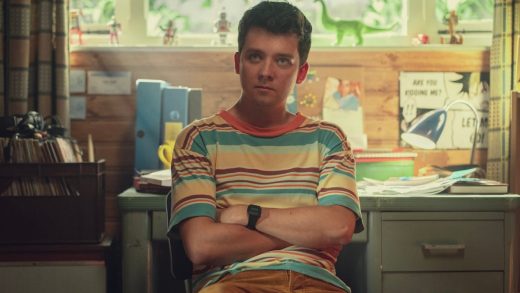:format(webp)/https://www.thestar.com/content/dam/thestar/entertainment/books/2023/06/01/how-a-magpie-named-george-saved-poet-frieda-hughes/frieda_hughes_author_photo.jpg)
Imagine not only wanting something for as long as you can remember but also finally finding yourself in that very place decades later, making a forever home in the company of rescue animals including dogs, owls, chinchillas, ferrets, rabbits and a curious, creative magpie.
That is what British writer-painter Frieda Hughes conjured for herself in 2004 when she bought a rambling, ramshackle property with a massive garden suitable for an aviary in rural Wales and began to put down roots after a lifetime of moving from place to place.
In “George: A Magpie Memoir,” Frieda writes that, as children, she and her younger brother, Nick, followed their famous poet father Ted (after he was widowed by the suicide of their mother, Sylvia Plath, in 1963) “like two trailing limbs,” never bothering to befriend schoolmates, knowing that sooner rather than later they would move elsewhere, perpetual outsiders who never belonged.
Recently, from her village kitchen with her flightless snowy owl Wyddfa for company (one of 13 owls who perch nearby), Hughes spoke to the Star at length about her life and memoir via Zoom. “I have a rule. As long as you want to interview me, I’m yours,” she said.
A committed diarist who writes every evening, Hughes finished a first draft of this book based on her 2007-08 entries back then. However, when her brother committed suicide in March 2009 she shelved the memoir. Dealing with Nick’s death — followed a few months later by her own messy divorce — sapped her emotional reserves.
“I feel that I have to live 10 times better than I ever thought so that all the deaths in my family (of her mother, brother and father, who died of cancer in 1998), particularly my brother’s, are not wasted,” she said. As a result, she trained as a grief counsellor and then as a person-centred therapist. “I believe in recycling of the self, so to waste my experiences with loss would be a shame. If I could be remotely useful to other people, then that would be a good thing.”
Hughes has a keen sense of urgency about living to her fullest. “Ever since I was a child, I’ve had a sense of time passing so fast that I can hear it whistling past my ears,” she said.
It is no wonder then that when week-old magpie chick George blew into her life after a storm tossed his nest at a time when her own life was falling apart, Hughes welcomed the distraction that his essential critter care required: “He became a pivotal part of my life. I didn’t look at my other problems, because George’s needs were paramount. He would have died without being attended to.”
She returned to the manuscript during pandemic lockdown, thinking, “Oh, here’s a book, let’s look at it, rework it by adding tiny bits of my life in the background, maybe tidy it up a bit.” All the while, Hughes kept reminding herself that George, the little chaos agent who brought so much unexpected joy to her life, was its star. “I was the centre of the magpie’s world for a while and it was bewitching. If I was on the telephone, he was like a child, agitating for attention, pulling my earrings out. I found him hysterical,” she said.
At a few months old, George would sit on her shoulder while she painted or sketched, watching her face and then her hand, and then he’d try to drag the lines she’d drawn off the page with his beak by pecking and pulling. He also developed a preference for the colour red, Hughes said: “He’d go through pencils in a cup and only pick out the red ones. I tried him on green items, but he hated them.”
Magpies apparently have a brain-to-body mass ratio that is only exceeded by humans. She used to watch him and think, “Oh, wow, this bird is just like me. He would find an odd-shaped thing and put it in the right odd-shaped place. I’ve done that all my life.”
George turned out to be her gateway bird. When he flew away, he left a bird-shaped hole in her life that was temporarily filled with an aging crow called Oscar. “I wanted to give Oscar a good death because I anthropomorphized him,” Hughes said. “I know he didn’t know what it felt like to be loved, but I needed to feel that he was being loved as he left this little coil.”
One of her poems, included in the memoir, explicates how each new death connects with those that have gone before:
“The Trouble With Death”
… is that it’s never one death.
The death of my forty-six-day crow,
Who was already bird-battered and aged
When handed to me in a cardboard box,
Was attached to the happy departure
Of a hand-reared five-months magpie
Which was still a bereavement of sort.
That in turn brought home the absence
Of the husband who’d just left for eight weeks in Australia,
Which suggested the idea of his death:
In moments of weakness, a real fear.
The dead crow is also connected
To the death of my father
And the desertion of my mother
Who took her own life.
As I bury my crow in the dirt
Beneath the monkey-puzzle tree
And stroke his glossy corpse
One last time, I am unable to let him go
But unable to bring him back.
I almost have to rip him
Out of my own hands.
George is also the reason Hughes keeps owls now, because she built an aviary for him and could not abide leaving it empty. More importantly, though, she discovered truths about herself from the five months George shared her life. “I learned that I am resilient and I am imperfect, but that’s fine. He made me look at myself in a way that made me happier to be myself and more comfortable in my own skin, including being comfortable with labels like ‘daughter of,’ as much as I might wish to be rid of them,” she said.
And she’s become more focused. “I have a plan. It’s writing particular things and painting certain things.”
Up next is another memoir. “You can argue that writing about George and part of my life is dipping my toe in the piranha pool. The kitchen owls book can’t help but have more because of Nick’s death.” Hughes is also keen to reprise her autobiographical poems collected in “45” and write a new series of poems called “70,” and create more abstract paintings of what she is experiencing on the inside to complement the text in time for her 70th birthday in 2030.
“I tried painting and not writing once and that didn’t work,” she said. “And I tried writing and not painting and that didn’t work. I need both. The person I am writes and paints, and I’ve finally created the home and workplace of my dreams.”
This is a joyful, aching memoir of identity, loss and hope, one that emerges from a friendship with a tiny, feathered, storm-tossed, squawking scrap of a magpie fledgling called George, a little bird with a big heart.
JOIN THE CONVERSATION
does not endorse these opinions.


